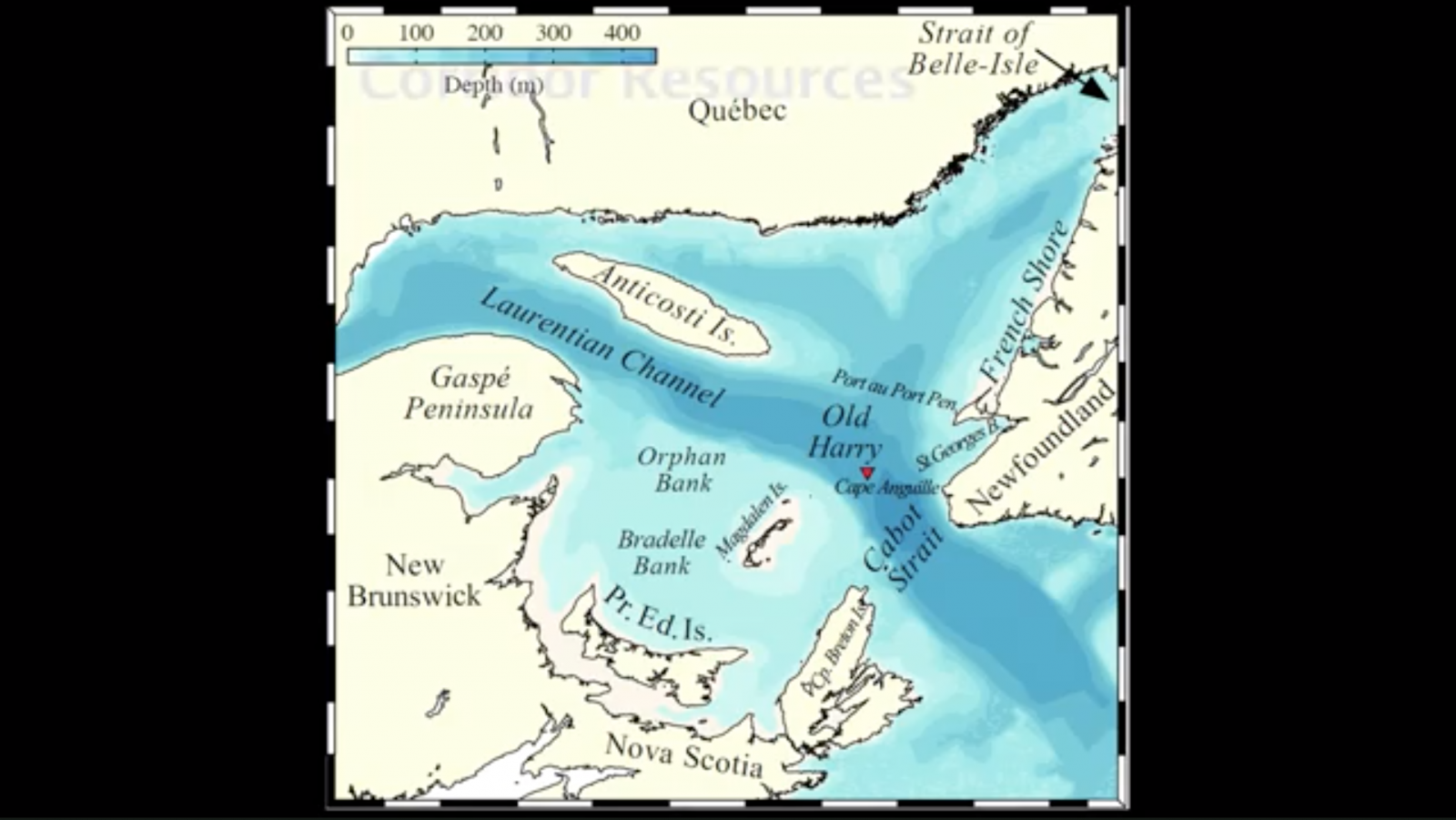
The Gulf of St Lawrence is under immediate pressure for oil and gas exploration, particularly at the Old Harry prospect. A synthesis of the regulatory process that has taken place over the last few years indicates that important societal decisions soon to be made by various ministries and environmental groups are going to be based on numerous disagreements between the private sector and government agencies. The review also shows that the regulatory process has taken place with a complete lack of independent oceanographic research. Yet, the Gulf of St Lawrence is a complex environment that has never been specifically studied for oil and gas exploitation. Motivated by this knowledge gap, preliminary numerical experiments are carried out where the spreading of a passive floating tracer released at Old Harry is examined. Results indicate that the tracer released at Old Harry may follow preferentially two main paths. The first path is northward along the French Shore of Newfoundland, and the second path is along the main axis of the Laurentian Channel. The most probable coastlines to be touched by water flowing through Old Harry are Cape Breton and the southern portion of the French Shore, especially Cape Anguille and the Port au Port Peninsula. The Magdalen Islands are less susceptible to being affected than those regions but the probability is not negligible. These preliminary results provide guidance for future more in-depth and complete multidisciplinary studies from which informed decision-making scenarios could eventually be made regarding the exploration and development of oil and gas at the Old Harry prospect in particular and, more generally, in the Gulf of St Lawrence.
A major scientific article was just published in Environmental Science Letters (UK) by Quebec oceanographers showing spill simulations from Old Harry. Things do not look good for western Nfld as all the coast is susceptible to be impacted.
Authors : Bourgault, Cyr and Dumont (three oceanographers) + Angela Carter (political sciences)
Here’s the 4-minute animation that shows where floating oil would likely end up after a spill.
Here is a link to the full scientific article in Environmental Science Letters.